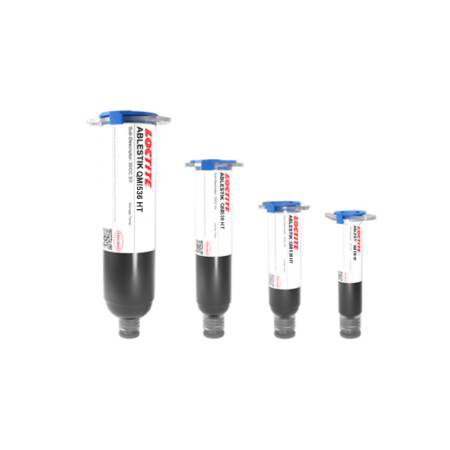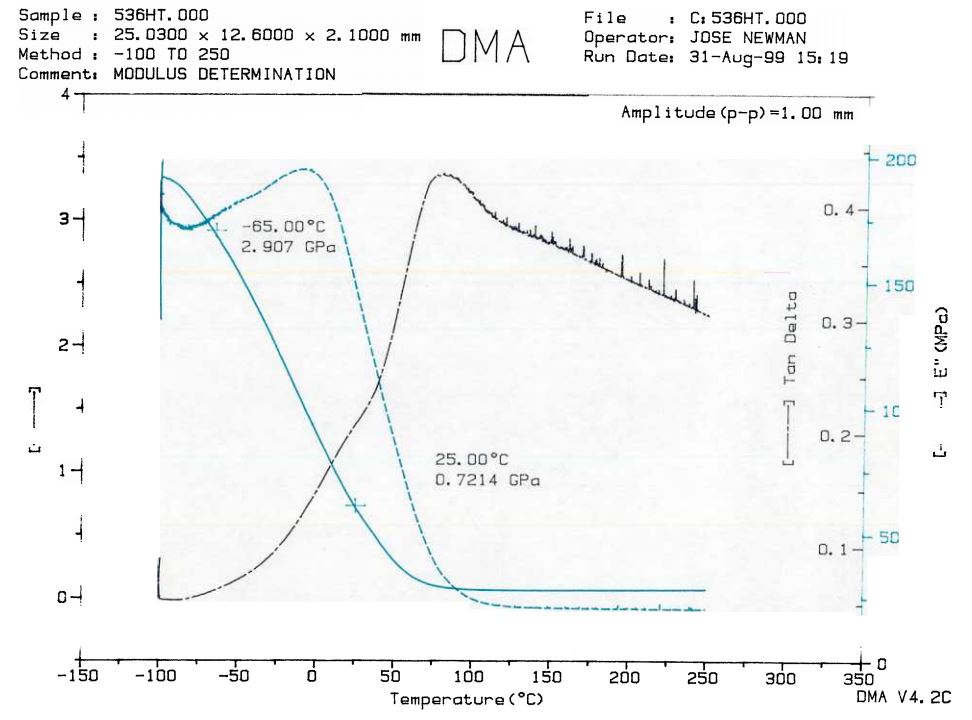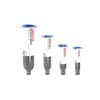LOCTITE ABLESTIK QMI536 HT
- Bismaleimide resin
- Hydrophobic
- Excellent interfacial adhesive strength
Product Description
LOCTITE® ABLESTIK QMI536 HT is a Boron nitride filled non-conductive adhesive for attachment of integrated circuits and components to advanced substrates and used in packages such as PBGAs, CSPs, array packages, and stacked die. Typical applications would include heatsinks, heatslugs and flip chips. This material is hydrophobic and stable at high temperatures.
LOCTITE® ABLESTIK QMI536 HT is a BMI/Acrylate hybrid that achieves a void-free bond line with excellent interfacial adhesive strength to a wide variety of organic and metal surfaces, including solder mask, BT, FR, polyimide, Palladium and Au. This pink, skip curable adhesive, also has excellent dielectric properties and good resistance to popcorning after beig exposed to reflow temperatures.
Cure schedule
- 15 minutes @ 150°C at bondline (Conventional Oven )
- ≥10 seconds @ 150°C at bondline (Snap Cure)
- ≥10 seconds @ 150°C at bondline (Tunnel Oven configured with hot gas or IR)
- ≥8 seconds @ 150°C at bondline (SkipCure )
Technical Specifications
| General Properties | |||||||||
| Pot Life Pot Life Pot life is the amount of time it takes for the viscosity of a material to double (or quadruple for lower viscosity materials) in room temperature after a material is mixed. It is closely related to work life but it is not application dependent, less precise and more of a general indication of how fast a system is going to cure. | 24 hours | ||||||||
| Specific Gravity Specific Gravity Specific gravity (SG) is the ratio of the density of a substance to the density of a reference substance; equivalently, it is the ratio of the mass of a substance to the mass of a reference substance for the same given volume. For liquids, the reference substance is almost always water (1), while for gases, it is air (1.18) at room temperature. Specific gravity is unitless. | 1.25 | ||||||||
| |||||||||
| |||||||||
| Thermal Properties | |||||||||
| Glass Transition Temperature (Tg) Glass Transition Temperature (Tg) The glass transition temperature for organic adhesives is a temperature region where the polymers change from glassy and brittle to soft and rubbery. Increasing the temperature further continues the softening process as the viscosity drops too. Temperatures between the glass transition temperature and below the decomposition point of the adhesive are the best region for bonding. The glass-transition temperature Tg of a material characterizes the range of temperatures over which this glass transition occurs. | 4 °C | ||||||||
| Thermal Conductivity Thermal Conductivity Thermal conductivity describes the ability of a material to conduct heat. It is required by power packages in order to dissipate heat and maintain stable electrical performance. Thermal conductivity units are [W/(m K)] in the SI system and [Btu/(hr ft °F)] in the Imperial system. | 0.9 W/m.K | ||||||||
| |||||||||
| Mechanical Properties | |||||||||
| |||||||||
| |||||||||
| Chemical Properties | |||||||||
| Moisture absorption | 0.35 % | ||||||||
| |||||||||
| Physical Properties | |||||||||
| Thixotropic index Thixotropic index Thixotropic Index is a ratio of a material s viscosity at two different speeds in Ambient temperature, generally different by a factor of ten. A thixotropic material s viscosity will decrease as agitation or pressure is increased. It indicates the capability of a material to hold its shape. Mayonnaise is a great example of this. It holds its shape very well, but when a shear stress is applied, the material easily spreads. It helps in choosing a material in accordance to the application, dispense method and viscosity of a material. | 5.5 | ||||||||
| Viscosity Viscosity Viscosity is a measurement of a fluid’s resistance to flow. Viscosity is commonly measured in centiPoise (cP). One cP is defined as the viscosity of water and all other viscosities are derived from this base. MPa is another common unit with a 1:1 conversion to cP. A product like honey would have a much higher viscosity -around 10,000 cPs- compared to water. As a result, honey would flow much slower out of a tipped glass than water would. The viscosity of a material can be decreased with an increase in temperature in order to better suit an application | 13,000 mPa.s | ||||||||







